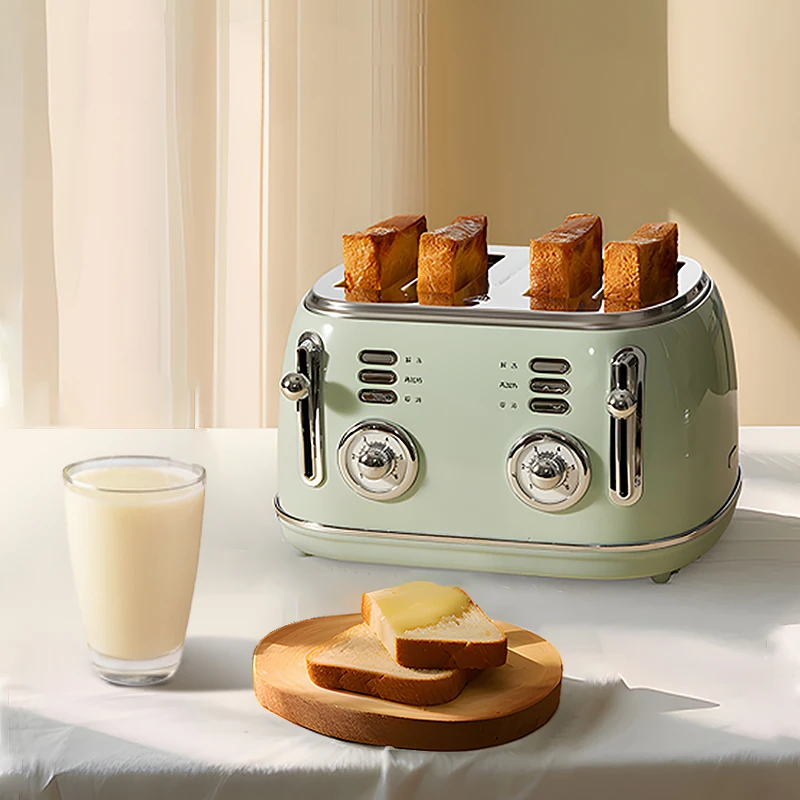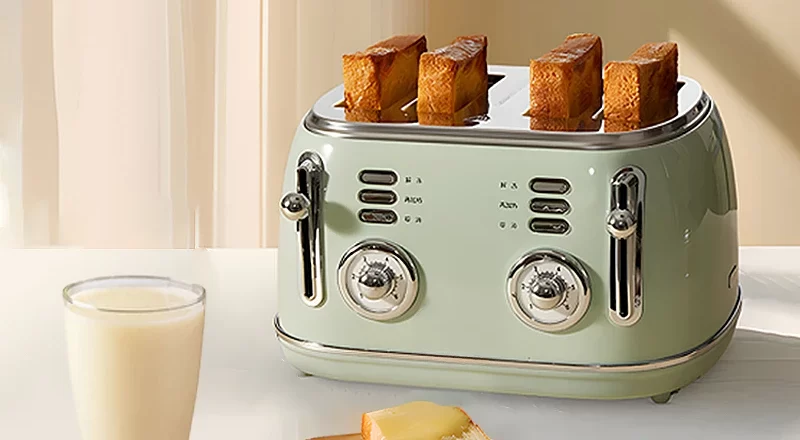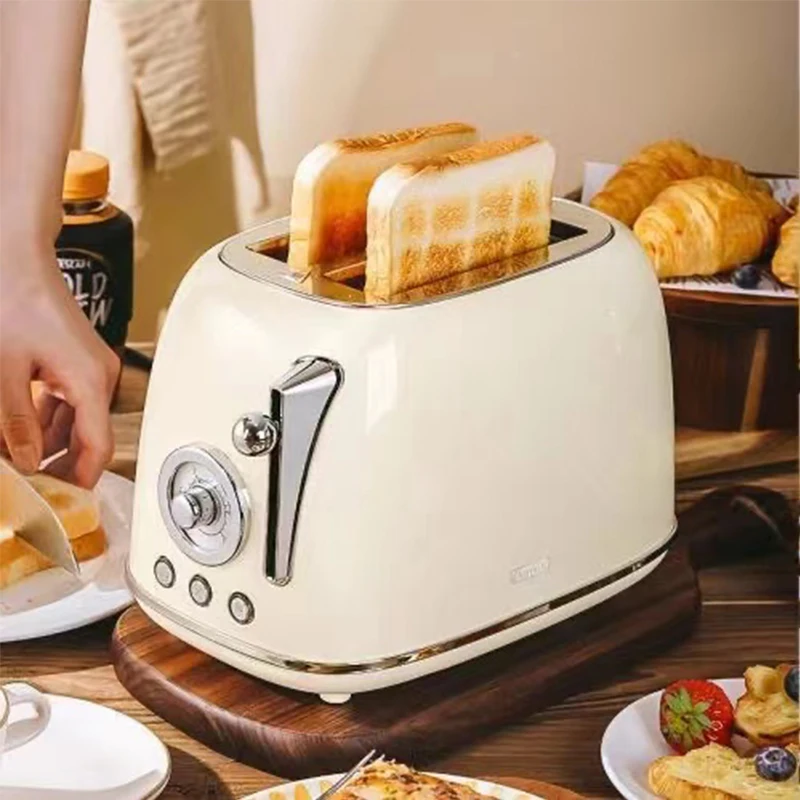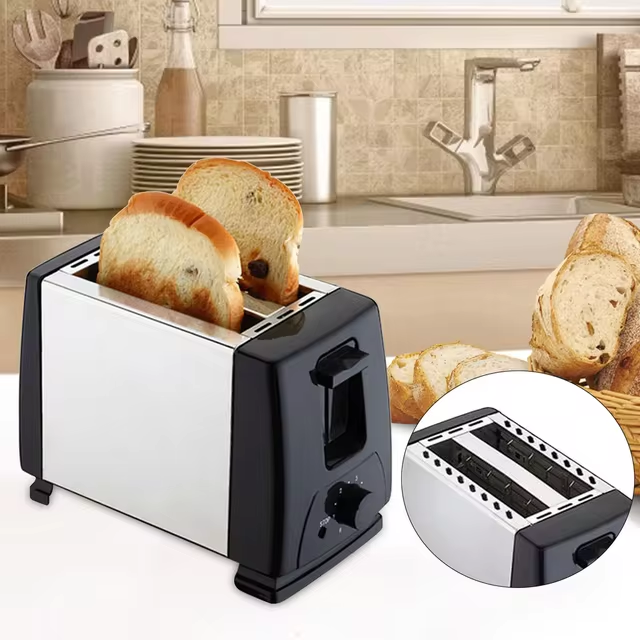Introduction
In the modern kitchen, few appliances are as indispensable and ubiquitous as the toaster. Whether it’s the first aroma of freshly baked bread in the morning or the comforting crunch of a toasted bagel for breakfast, the toaster has secured its place as a staple in households worldwide. This seemingly simple device has evolved significantly over the years, incorporating advanced technologies and design innovations that enhance its functionality and user experience. From its humble beginnings to the sophisticated models available today, the toaster remains a testament to the blend of practicality and innovation in everyday kitchen gadgets.
Types of Toasters
Pop-Up Toasters
Pop-up toasters are the most common type found in households. They typically have two or four slots and use electric heating elements to toast slices of bread evenly. The automatic pop-up feature enhances convenience, making it easy to retrieve toasted bread without constant supervision.
Toaster Ovens
Toaster ovens combine the functionalities of a toaster and a conventional oven. They offer greater versatility, allowing users to toast, bake, broil, and even roast. This multifunctionality makes toaster ovens a popular choice for those with limited kitchen space or who seek an all-in-one appliance.
Conveyor Toasters
Conveyor toasters are primarily used in commercial settings such as hotels, restaurants, and cafes. They use a conveyor belt mechanism to toast large quantities of bread continually and uniformly. This type of toaster is ideal for high-volume establishments that require consistent and speedy toasting.
Smart Toasters
With the rise of smart home technology, smart toasters have emerged, offering features like Wi-Fi connectivity, smartphone integration, and voice control through virtual assistants. These toasters can be programmed remotely, allowing users to start the toasting process from their devices and customize settings with precision.
How Toasters Work
Heating Mechanism
At the core of any toaster is the heating element, typically made of nickel-chromium alloy known as nichrome. When electrical current passes through the nichrome wire, it heats up and emits infrared radiation, which toasts the bread. The efficiency and even distribution of heat are crucial for achieving a uniform toast.
Browning Control
Toasters are equipped with controls to adjust the browning level, ranging from light to dark. Early models used mechanical timers, while modern toasters use electronic sensors and microcontrollers to monitor and regulate the toasting process more accurately. Some advanced toasters even include humidity sensors to adjust toasting based on the moisture content of the bread.
Safety Features
Modern toasters incorporate several safety features to prevent accidents and ensure reliable operation. Automatic shut-off mechanisms deactivate the toaster once the toasting cycle is complete. Cool-touch exteriors and crumb trays designed for easy cleaning also contribute to the overall safety and maintenance of the appliance.
Choosing the Right Toaster
Number of Slots
The number of slots determines how much bread you can toast at once. Two-slot toasters are suitable for individuals or small families, while four-slot models are ideal for larger households or those who frequently host guests.
Slot Width and Depth
Bread comes in various sizes, from standard slices to artisanal loaves. To accommodate thicker slices or specialty bread, choose a toaster with wider and deeper slots. Some toasters also offer adjustable or expandable slots to handle different bread sizes.
Browning Settings
A wide range of browning settings allows for greater customization based on personal preferences. Look for toasters that offer incremental settings rather than just high or low options to achieve the perfect toast consistently.
Additional Features
Consider additional features such as defrost functions for frozen bread, reheating options, and bagel settings that toast one side while gently warming the other. Extra features like a cancel button, dark staining indicator, and a removable crumb tray can enhance usability and maintenance.
Aesthetic and Build Quality
Toasters come in various styles, colors, and materials to match different kitchen décors. Stainless steel models offer a sleek, modern appearance, while colored toasters can add a pop of personality to your countertop. Build quality is also essential for durability and long-term performance.
Common Toaster Problems and Solutions
Uneven Toasting
Uneven toasting is a common issue that can result from dirty heating elements or malfunctioning sensors. Regular cleaning of the crumb tray and interior can help maintain even heat distribution. If the problem persists, consult the manufacturer’s guidelines or seek professional repair.
Toaster Not Heating
If the toaster fails to heat, first check if it is properly plugged in and that the outlet is functioning. Inspect the power cord for any visible damage. If the toaster still does not heat, it may require internal repairs or replacement of faulty components.
Stuck Slices
Slices can become stuck in the toaster due to mechanical failures or foreign objects lodged in the slots. Ensure the toaster is unplugged before attempting to retrieve stuck slices. Gently use tongs or a non-metallic tool to extract the bread without damaging the heating elements.
Crumb Buildup
Excessive crumb buildup can hinder toaster performance and pose a fire risk. Regularly empty the crumb tray and vacuum out any remaining crumbs from the interior using a brush attachment. Avoid using sharp objects that could damage the toaster’s parts.
Innovations in Toaster Technology
Smart Features
The integration of smart technology has transformed the traditional toaster into a connected kitchen device. Smart toasters can be controlled via smartphone apps, allowing users to start, stop, and customize toasting settings remotely. Some models include features like toast memory profiles, enabling personalized settings for different users.
Energy Efficiency
Modern toasters are designed with energy efficiency in mind. Energy-saving modes and improved insulation reduce power consumption while maintaining high performance. LED indicators and precise control mechanisms contribute to lower energy usage without compromising on functionality.
Multi-Functionality
Toasters are now designed to perform multiple functions beyond simple toasting. Features such as air frying, baking, and dehydrating expand the capabilities of toaster ovens, making them versatile appliances that can handle a variety of cooking tasks.
Enhanced Materials and Design
Advancements in materials have led to more durable and aesthetically pleasing toasters. High-quality stainless steel, glass panels, and ceramic coatings not only improve the toaster’s appearance but also enhance its resistance to wear and tear. Ergonomic designs with intuitive interfaces make toasters easier to use and maintain.
Future Trends in Toaster Development
Integration with Smart Kitchens
As smart home ecosystems become more interconnected, toasters are expected to integrate seamlessly with other kitchen appliances. This integration allows for coordinated cooking processes, where a smart toaster communicates with other devices to optimize meal preparation.
Personalized Toasting Experiences
Future toasters may offer even more personalized experiences, utilizing artificial intelligence to learn user preferences and adjust settings automatically. Machine learning algorithms could predict the perfect toasting time and temperature based on past usage patterns and the type of bread being toasted.
Sustainable Innovations
The push towards sustainability will drive the development of eco-friendly toasters. Innovations may include the use of biodegradable materials, energy-efficient heating technologies, and designs that facilitate easy repair and recycling.
Enhanced User Interfaces
Advancements in user interface design will make toasters more intuitive and user-friendly. Touchscreen controls, voice activation, and gesture recognition are potential features that could simplify operation and enhance the overall user experience.
 Conclusion
Conclusion
From its inception to its current state as a technologically advanced kitchen appliance, the toaster has proven to be a remarkable example of how everyday devices can evolve to meet changing consumer needs and technological advancements. Its continued relevance in the modern kitchen underscores the blend of simplicity and innovation that drives successful product development. As we look to the future, the toaster is poised to become even more integrated into our smart homes, offering personalized, sustainable, and efficient toasting solutions. Whether it’s the familiar crunch of morning toast or the anticipation of a perfectly browned slice, the toaster remains an essential companion in our daily lives, embodying both functionality and the enduring quest for convenience.



